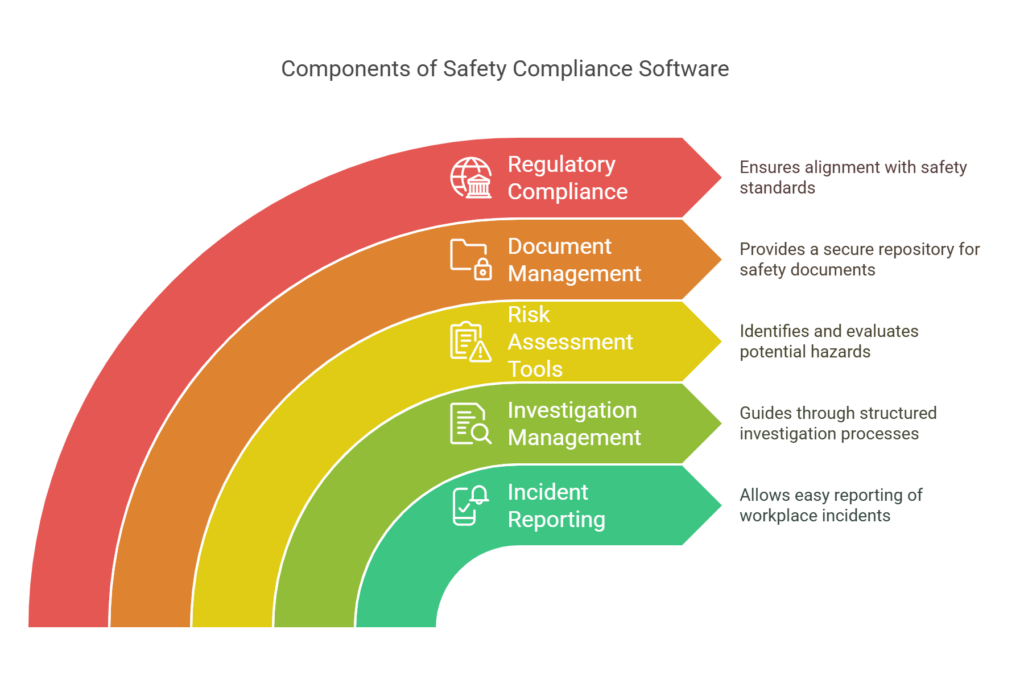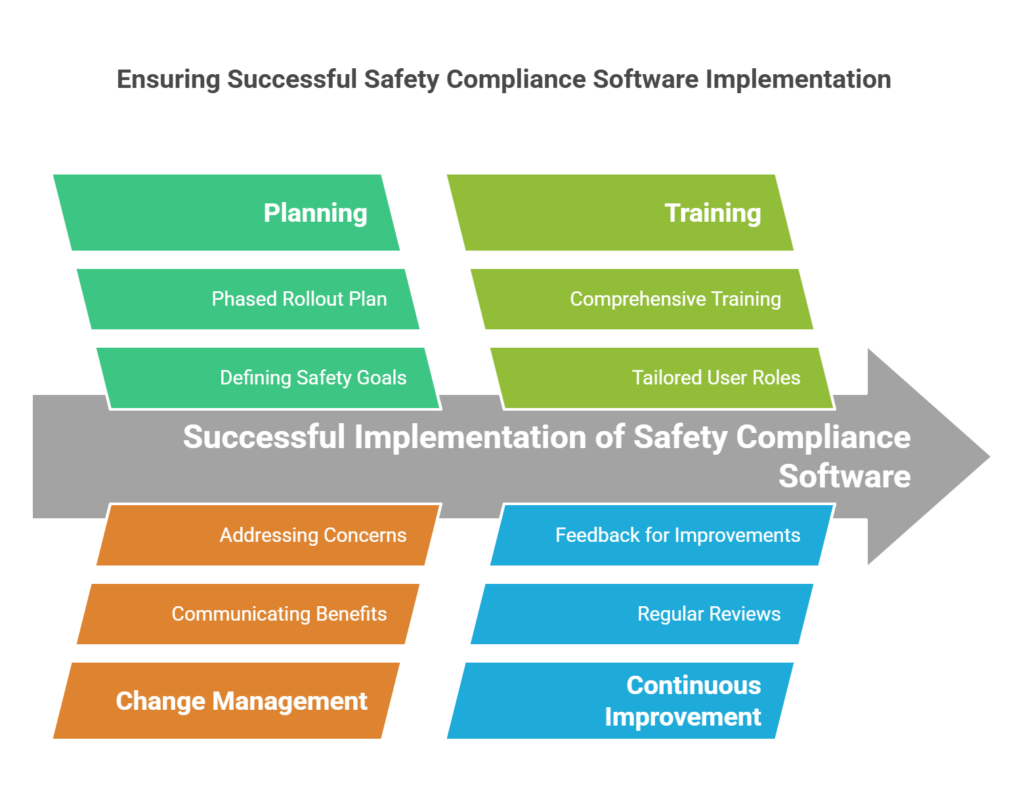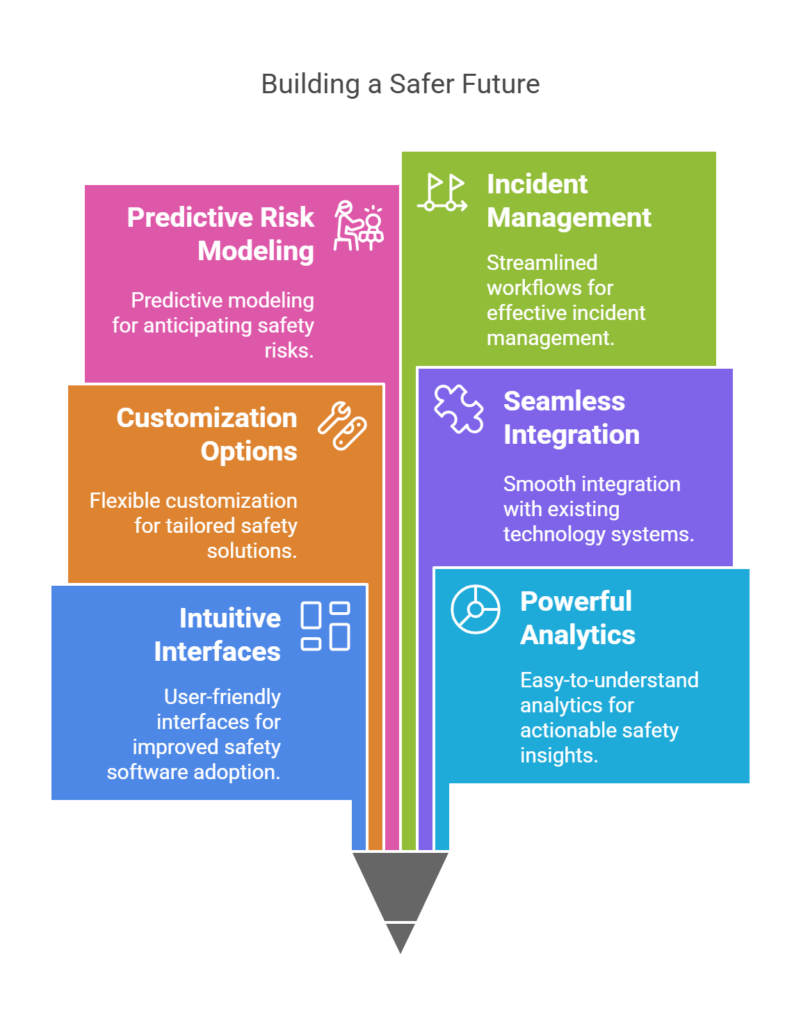Did you know that workplace injuries and illnesses cost businesses billions each year, not to mention the immeasurable human cost? Keeping employees safe isn’t just a moral imperative; it’s a legal and financial necessity. Staying on top of complex regulations, managing incidents, and proactively identifying risks can feel overwhelming. This is where safety compliance software steps in, offering a powerful way to streamline processes and build a stronger safety culture. 👷♀️
Safety compliance software provides a centralized platform to manage all aspects of workplace safety, from reporting hazards to tracking training and ensuring you meet regulatory requirements. It moves safety management from reactive paperwork drills to proactive, data-informed strategies. We’ll explore the essential features that make this software indispensable, how to pick the right system for your needs, and the real difference it can make for your organization’s safety performance and bottom line. Ready to see how technology can help protect your most valuable asset – your people?
Understanding Safety Compliance Software
So, what exactly is safety compliance software? Think of it as a digital command center for all things related to workplace health and safety (EHS – Environment, Health, and Safety). Its main job is to help organizations manage safety protocols, stay compliant with laws and standards (like OSHA, ISO, etc.), track incidents and near-misses, conduct audits, manage training records, and assess risks systematically. It centralizes safety data, making it accessible and actionable.
Compared to traditional methods often involving spreadsheets, paper forms, and overflowing filing cabinets 📁, safety compliance software offers a much more efficient, accurate, and transparent approach. Manual systems are prone to errors, lost documents, and time delays, making it tough to spot trends or prove compliance during audits. Digital solutions automate many routine tasks, provide real-time visibility into safety performance, and make adapting to ever-changing regulations much simpler. It’s about moving from ‘checking boxes’ to actively managing and improving safety management.
“Health and safety compliance software provides tools that help identify, assess and mitigate risks in the workplace.”-Evotix
Key Features of Effective Safety Compliance Software
One cornerstone feature is robust incident reporting and investigation management. Good software allows any employee to easily report incidents, hazards, or near-misses, often via mobile apps. It then guides safety professionals through a structured investigation process, helping identify root causes and assign corrective actions. Coupled with this are risk assessment tools that help systematically identify potential workplace hazards, evaluate their severity and likelihood, and implement control measures before incidents occur. ✅
Keeping track of safety documents, policies, procedures, permits, and certifications is another critical function. Safety compliance software offers a central, secure repository for all safety-related documentation, often with version control and automated review reminders. This improves document management significantly. Just as important is staying current with regulations. Many platforms provide alerts or libraries detailing relevant local, national, and international safety standards, helping ensure your procedures always align with legal requirements.

Finally, powerful analytics and reporting capabilities turn raw safety data into valuable insights. Dashboards can visualize key performance indicators (KPIs) like incident rates, training completion status, and overdue corrective actions. Customizable reports allow safety managers to analyze trends, identify high-risk areas, demonstrate compliance to regulators, and present safety performance clearly to leadership. It’s about seeing the bigger picture. 📊
“Workplace safety software is a comprehensive suite of digital tools designed to proactively manage and improve safety protocols within an organisation.”-Hubble
Benefits of Implementing Safety Compliance Software
Switching from manual processes to dedicated software brings a significant boost in efficiency. Automating tasks like report generation, reminder notifications for training or inspections, and data entry saves countless hours for safety personnel. This frees them up from administrative burdens to focus on proactive safety initiatives, like site inspections, safety coaching, and developing better risk controls. Improved efficiency across the board often sees an uptick when safety processes are smooth and accessible.
Communication is key in safety, and software platforms greatly improve it. Centralized information means everyone is working from the same playbook. Features like automated notifications, shared task lists, and easy access to safety procedures ensure critical information reaches the right people quickly. Collaboration between departments, workers, and management on safety matters becomes much easier when facilitated by a common platform.
Perhaps one of the most powerful benefits is the shift towards data-driven decision-making. Instead of relying on gut feelings or incomplete records, safety managers have access to comprehensive data and analytical tools. This allows for the identification of recurring incident types, high-risk locations or activities, and the effectiveness of implemented control measures. Decisions about resource allocation, training needs, and safety program adjustments become evidence-based and far more effective. 💡
While there’s an initial investment, safety compliance software typically delivers substantial cost reduction and a strong return on investment (ROI). This comes from reducing incident-related costs (medical expenses, compensation, equipment damage, lost productivity), avoiding hefty non-compliance fines, lowering insurance premiums, and improving overall operational efficiency. Proactive safety management, enabled by software, is almost always less expensive than reacting to incidents.
“By automating routine tasks like data entry and document control, the software reduces the risk of human error, freeing up valuable resources and allowing staff to focus on more strategic activities.”-Evotix
Choosing the Right Safety Compliance Software
Not all safety management software is created equal. It’s vital to select a system that can grow with your organization. Consider whether the software can handle an increasing number of users, sites, or data volume as your company expands. Look for customization options too – can the forms, workflows, and reports be adjusted to match your specific industry requirements and internal processes? A one-size-fits-all approach rarely works perfectly in safety management.
How well will the new software play with your existing tools? Check its integration capabilities. Can it connect with your HR system for employee data, your ERP for operational context, or other business intelligence tools? Seamless integration avoids data silos and duplicate entry, providing a more holistic view of safety within your overall operations. This is a critical point for maximizing efficiency.
Never underestimate the importance of user-friendliness. If the software is clunky or difficult to use, employees simply won’t engage with it, defeating the purpose. Look for an intuitive interface, clear navigation, and mobile accessibility. Also, ask about the training resources and support provided by the vendor. Proper training is essential for successful adoption across your workforce, from field workers reporting hazards to managers analyzing safety trends.
“Factor in system integration: The right safety management software should easily integrate with the systems already in place.”-Capterra
Implementing Safety Compliance Software in Your Organization
Successfully putting safety compliance software in place requires careful planning. Start by clearly defining your safety goals and identifying the specific problems you want the software to solve. Assemble an implementation team with representatives from safety, IT, and operations. Develop a phased rollout plan, perhaps starting with one module or location, before expanding. Data migration from old systems needs thoughtful handling to ensure accuracy.
Introducing new software often means changing established routines, so effective change management is crucial. Communicate the ‘why’ behind the change – focus on the benefits for employees and the company. Provide comprehensive training tailored to different user roles. Address concerns openly and gather feedback during the rollout process. Getting employee buy-in from the start makes the transition much smoother.
Launching the software isn’t the end of the journey. Safety management is an ongoing process. Regularly review how the software is being used and whether it’s meeting your objectives. Solicit feedback for improvements. Stay informed about software updates and new features offered by the vendor. Continuous refinement ensures the system remains a valuable asset for maintaining a safe workplace.

Real-World Impact: Case Studies
Consider a manufacturing company that struggled with tracking near-misses and minor incidents, relying on paper forms often filed late or incomplete. After introducing safety compliance software with an easy-to-use mobile reporting app, reported near-misses tripled in the first six months. This surge in data allowed them to identify previously unnoticed hazards related to specific machinery, leading to targeted preventative maintenance and guarding upgrades. Within a year, their recordable incident rate dropped by 35%. 🎉
Another example comes from a construction firm facing challenges managing safety documentation and training records across multiple job sites. Implementing a centralized safety platform dramatically reduced administrative time spent chasing paperwork and verifying certifications. Audit preparation time was cut by over 50%. The improved visibility into training compliance also led to a measurable decrease in incidents caused by inadequate worker preparation, directly impacting their insurance premiums and project profitability. 💰
Future Trends in Safety Compliance Software
Artificial intelligence (AI) and machine learning (ML) are poised to make safety management even more proactive. These technologies can analyze vast amounts of safety data (incident reports, inspection findings, sensor readings) to identify complex patterns and predict potential future incidents with surprising accuracy. Imagine software that flags high-risk scenarios *before* they lead to harm, allowing for preemptive interventions.
Mobile functionality is already essential, but it will become even more integrated. Expect richer mobile apps allowing offline data capture, photo/video uploads directly into incident reports, and real-time safety alerts pushed to workers’ devices. Integration with the Internet of Things (IoT) is also growing – think wearable sensors monitoring worker fatigue or environmental conditions, feeding data directly into the safety platform for analysis and immediate response if safety thresholds are breached. 📱
“Artificial intelligence (AI) can predict and analyze workplace risk hazards. Machine learning and AI improve workplace safety.”-Capterra
Nektar.io: Pioneering Safety Compliance Solutions
When looking for advanced safety compliance software, Nektar.io stands out with its innovative approach. They offer a suite of tools designed not just for compliance, but for building a truly proactive and data-driven safety culture within organizations. Their platform is built with the end-user in mind, aiming for simplicity and effectiveness.
Nektar.io differentiates itself with highly intuitive interfaces, powerful analytics that are easy to understand, and flexible customization options. They emphasize seamless integration capabilities, ensuring their software works smoothly within your existing tech stack. Features often highlighted include predictive risk modeling based on your specific data, streamlined incident management workflows, and comprehensive audit and inspection tools accessible from anywhere.
Many businesses struggle with user adoption of safety software or getting meaningful insights from their data. Nektar.io directly addresses these points by focusing on user experience and presenting complex data in clear, actionable formats. Their solutions help organizations move beyond basic compliance to genuinely anticipate risks and continuously improve safety performance across the board. Check out Nektar.io to see how they can help elevate your safety program.

FAQ: Common Questions About Safety Compliance Software
What is safety compliance software?
Safety compliance software is a specialized application designed to help organizations manage their health and safety programs. It centralizes tasks like incident reporting, risk assessments, audits, inspections, corrective action tracking, training management, and regulatory compliance documentation in one digital platform.
How does safety compliance software improve workplace safety?
It improves safety by streamlining processes, increasing visibility into risks and trends through data analysis, automating reminders and workflows, enhancing communication about safety matters, ensuring easier compliance with regulations, and enabling proactive identification and mitigation of hazards before incidents occur.
Is safety compliance software suitable for small businesses?
Absolutely! While features and pricing vary, many vendors offer scalable solutions suitable for small to medium-sized businesses (SMBs). The benefits of improved efficiency, reduced risk, and better compliance often provide significant value even for smaller operations. Look for cloud-based options that may have lower upfront costs.
How long does it take to implement safety compliance software?
Implementation time varies depending on the software’s complexity, the size of the organization, the amount of data migration needed, and the level of customization required. It can range from a few weeks for simpler setups in small companies to several months for large, complex enterprise-wide rollouts.
Can safety compliance software integrate with existing systems?
Yes, many safety compliance software platforms are designed to integrate with other business systems, such as Human Resources (HRIS), Enterprise Resource Planning (ERP), maintenance management (CMMS), and business intelligence (BI) tools. Good integration capability is a key factor when selecting software.
Conclusion
Managing workplace safety effectively is non-negotiable in today’s business environment. Safety compliance software has emerged as an essential tool, moving organizations beyond cumbersome manual methods towards efficient, data-driven, and proactive risk management. It helps ensure regulatory adherence, boosts productivity, improves communication, and most importantly, contributes to a safer environment for everyone. 💪
Investing in the right platform can make a profound difference. Nektar.io offers leading-edge safety compliance solutions designed to meet the challenges modern businesses face. Their focus on usability, powerful analytics, and proactive risk management sets them apart. If you’re ready to take your organization’s safety program to the next level, explore what Nektar.io has to offer today! ✨
Key Takeaways:
- Safety compliance software streamlines risk management and regulatory adherence
- Key features include incident reporting, risk assessment, and analytics
- Benefits include improved efficiency, enhanced communication, and cost reduction
- Choosing the right software involves considering scalability, integration, and user-friendliness
- Nektar.io offers pioneering solutions addressing common industry challenges



